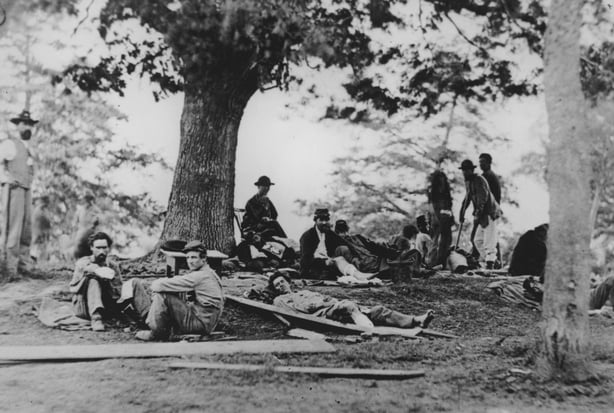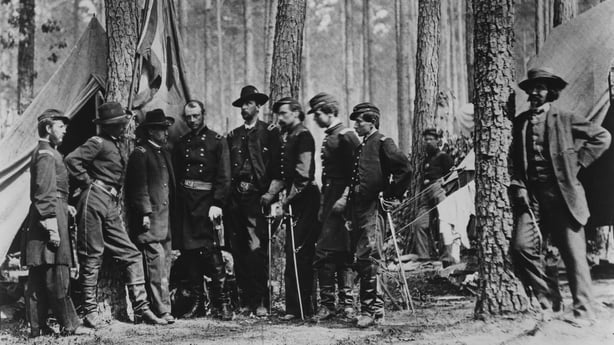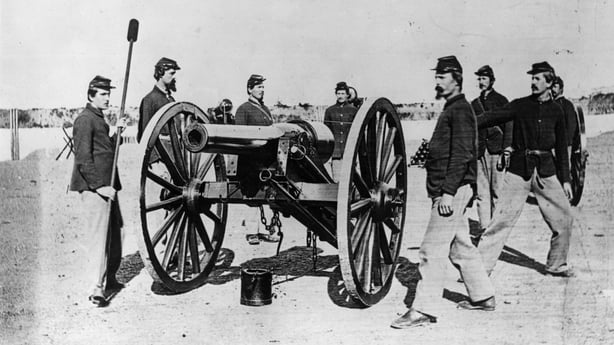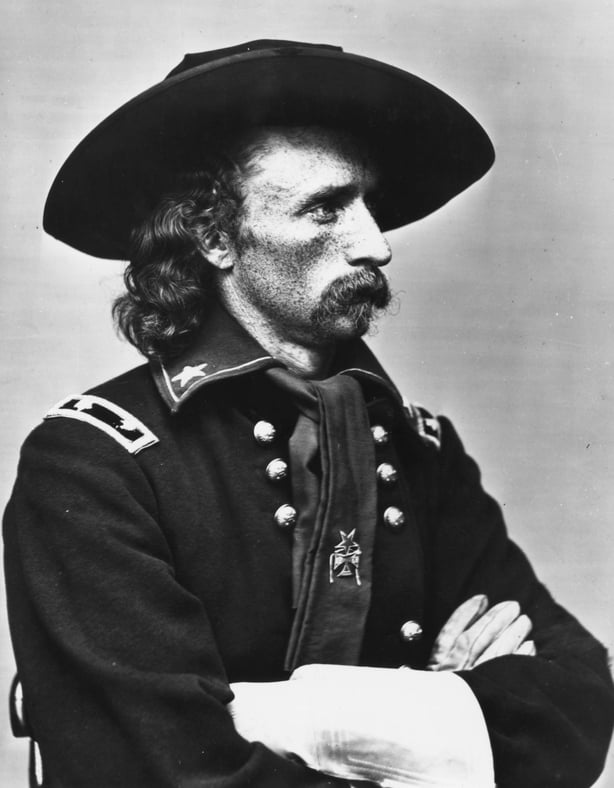Analysis: Brady's striking photography documented the American Civil War and showed those on the home front the realities of modern warfare
Today, we are accustomed to seeing images of war and conflict on our TVs, phones and other devices. Indeed, we have become perhaps too accustomed to seeing such images and we are at risk of being totally de-sensitised to scenes of human suffering. Since the outbreak of war in Ukraine in 2022, and now with the conflict in Gaza, such images have become disturbingly commonplace and are often shocking in nature.
Imagine the impact that photographs of war made on the general public when cameras were first brought to the battlefield in the 1850s. The first battlefield photographer was George Fenton, who travelled with his mobile photographic lab to the Crimean War (1854-56). Although newspaper editors of the time did not allow photographs with dead bodies to be published, Fenton's images of battlefield destruction were unsettling.

During the American Civil War (1861-65), such restrictions were not exercised and, as the war progressed, the American public were presented with images of the realities of modern warfare, casualties included. It represented a shocking "loss of innocence" moment and these photographs were later distributed in European newspapers and published in books.
Several photographers had significant Civil War careers, but Mathew Brady was perhaps the most impactful. A certain amount of mystery still clings to Brady and he was born sometime between 1822 and 1824, the youngest child of Andrew and Julia Brady. He grew up in Warren County, New York, and is memorialised locally as having been born there.
But in official documents before the Civil War, including census returns, Brady stipulated that he had been born in Ireland and he is usually associated with Co Cavan. There is a possibility that he later reinvented himself as having been born in the United States due to anti-Irish sentiment in America at the time.

Aged 16, Brady was apprenticed to a portrait painter, but he was being trained in the process of creating daguerreotype photographs by pioneer photographer Samuel Morse by the early 1840s. Brady opened his own photography studio in New York City in 1844 and he published a photographic collection of prominent individuals, The Gallery of Illustrious Americans, including the former president, Andrew Jackson, in 1850. The success of this volume brought Brady to wider public attention and he began experimenting with ambrotype methods that allowed for paper photographs to be printed from glass plates.
On the outbreak of the civil war in 1861, Brady’s studio business enjoyed huge success as volunteers for the Union army, who expected the war to be short, went to his premises in droves for formal portraits in their new uniforms. Brady soon decided to take his camera to the battlefield and was at the First Battle of Bull Run in July 1861. This was to be his first or many battlefield sessions and he got close enough to the action to be fired upon on some occasions.

Considering the nature of his camera equipment, this was a courageous move. Brady and photographers of his generation used large box type cameras, which were mounted on tripods. The lens projected images on glass photographic plates, which were later developed in a darkroom. It was a large and bulky piece of equipment, which made the photographer vulnerable on a battlefield. The lens itself did not have a shutter device and photographers had to remove a lens cap, count to ten, then replace it as the image was imprinted on the glass plate.
As a result of this slow process, Brady could not take "action shots" and the subject of any photograph had to hold absolutely still for a count of ten, whether in the studio or the battlefield. In the taking of battlefield photographs, the selection of the subject was perhaps more important than the operation of the camera and we now recognise that Brady was influential in elevating photography from being a mere trade to being an emerging art form.

Despite the limitations of the technology, Brady captured a series of battlefield photographs at the battles of Bull Run, Fredericksburg and Petersburg. He went on to employ 17 other photographers, who were equipped with mobile darkrooms and sent to document the war. Brady and his team created a photographic record of the war, which is still referred to in modern scholarship, and these photographs are reproduced in books and documentaries. Collectively, they have been hugely instrumental in our understanding of that war.
In 1862, Brady opened an exhibition, The Dead of Antietam, at his New York studio. It was the first time that the American public was faced with photographic evidence of the reality of the war, including images of dead bodies, rather than romanticised artists’ impressions. It was a hugely impactful and shocking exhibition. Basing himself at a studio in Washington DC, Brady later carried out a series of formal portraits of significant figures such as Abraham Lincoln and General Ulysees S. Grant, among many other Union figures. On the Confederate side, Brady photographed Jefferson Davis, General Stonewall Jackson and General Robert E. Lee after the war.

Despite his wartime success, Brady ended his life in straitened circumstances. He invested heavily in reproducing thousands of glass plate images which failed to sell among the war-weary population. He died in New York on January 15th 1896 in almost penniless circumstances and his funeral was paid for the veterans association of the 7th New York Infantry.
It is ironic that his photographs and plates are now so sought after by collectors, while they also form part of significant collections the National Archives and the Library of Congress in America. His images later inspired numerous artists, including Irish artist Sean Keating, and provided the imagery for Ken Burns' seminal docuseries The Civil War (1990). He is now recognised as the father of photojournalism.
The views expressed here are those of the author and do not represent or reflect the views of RTÉ







